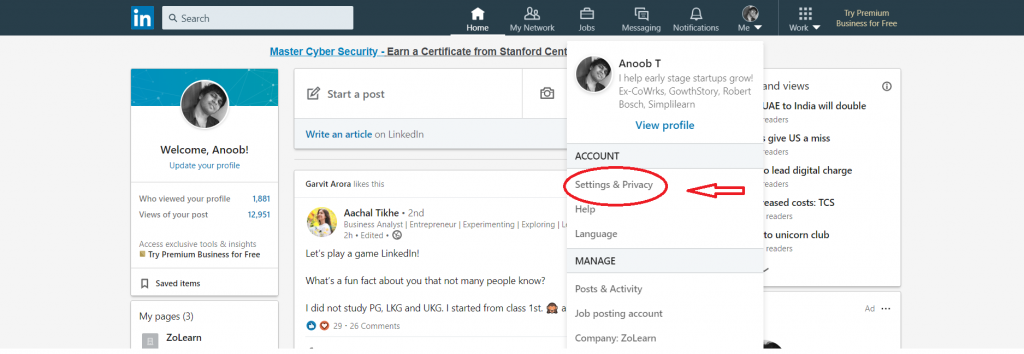We all cherish our professional networks, but sometimes, less is more. Deleting unnecessary contacts on LinkedIn can help streamline your connections and enhance the quality of your network. In this blog post, we’ll discuss why you might consider pruning your LinkedIn contacts and the benefits that come along with a cleaner network. So, let’s dive in!
Reasons to Delete Contacts on LinkedIn

With LinkedIn being a powerhouse platform for networking, it’s easy to accumulate connections over time. However, not all connections serve a purpose. Here are some compelling reasons to consider deleting certain contacts:
- Irrelevant Connections: Sometimes, you might connect with individuals who seemed relevant at the time but no longer align with your career goals. Keeping them can clutter your feed and distract from meaningful updates.
- Inactive Accounts: Some connections may not be active on LinkedIn anymore. This could mean you’re missing out on connecting with more engaged users, so it’s okay to let go of those inactive profiles.
- Unprofessional Behavior: If you’ve experienced unprofessional interactions with certain individuals, it might be wise to sever those ties to maintain your professional integrity.
- Too Many Connections: LinkedIn has a limit to the number of connections you can have. If you’re nearing that limit, it’s time to evaluate your connections and remove those that don’t add value.
- Targeted Networking: A smaller, more relevant network can enhance your networking efforts. By eliminating excess connections, you can focus on building relationships that truly matter to your career or business.
Ultimately, maintaining a clean LinkedIn network can lead to more focused networking opportunities, improved engagement with meaningful content, and a clearer professional presence online. Remember, it’s not just about the quantity of connections, but the quality that counts!
Steps to Delete Contacts on LinkedIn
Deleting contacts on LinkedIn may seem daunting at first, but it's a straightforward process. Here’s how you can delete contacts and keep your network clean:
- Log Into Your LinkedIn Account: Start by logging into your LinkedIn account. Make sure you’re on the homepage.
- Go to Your Connections: Click on the "My Network" tab located at the top of the page. This will take you to a page that lists all your current connections.
- Find the Connection You Want to Remove: Scroll through your connections or use the search bar to find the specific contact you wish to delete. This saves time, especially if you have a large network.
- Open Their Profile: Click on the person's name to access their profile page.
- Remove Connection: On their profile, hover over the "More" button (usually next to the “Message” button) and select "Remove connection" from the dropdown menu.
- Confirm Removal: A prompt will appear asking you to confirm that you want to remove this connection. Click "Remove" to finalize the action.
Once you follow these steps, the contact will be removed from your network, making it easier to manage your connections without clutter. It's a good habit to regularly review and clean up your connections as your professional needs change!
Tips for Managing Your LinkedIn Contacts
Having a well-organized LinkedIn network can greatly enhance your professional interactions. Here are some useful tips for managing your connections effectively:
- Regularly Review Your Connections: Set a reminder to review your connections every few months. Determine who adds value to your network and who doesn’t.
- Use Tags and Notes: Consider using LinkedIn’s tagging feature. Create tags for different groups like industry professionals, previous colleagues, or mentors. This will help you organize and locate contacts easily.
- Engage with Your Network: Simply having connections isn’t enough; engage with them! Like, comment, or share their posts to maintain strong relationships.
- Delete Inactive Contacts: If someone is no longer active on LinkedIn or relevant to your career goals, don’t hesitate to remove them.
- Personalize Connection Requests: When adding new contacts, always send personalized connection requests. This helps build rapport from the get-go.
By following these tips, you can maintain a more meaningful network, ensuring your LinkedIn experience is both engaging and beneficial for your career growth!
How to Delete Contacts in LinkedIn for a Cleaner Network
Managing your LinkedIn network is essential for maintaining professional relationships and ensuring you only connect with relevant contacts. Sometimes, however, your connections may become outdated or no longer serve your professional goals. In such cases, it's important to know how to delete contacts on LinkedIn. Here’s a step-by-step guide to help you through the process:
- Log into Your LinkedIn Account: Start by visiting the LinkedIn website and logging into your account.
- Go to Your Connections: Click on the 'My Network' icon located on the top bar. Then, click on 'See all' next to 'Your connections'.
- Search for the Contact: Use the search bar to find the contact you wish to delete. You can type their name or scroll through your connection list.
- Remove the Connection: Once you've found the contact, click on the 'More' icon (three dots) next to their name. From the drop-down menu, select 'Remove connection'.
- Confirm Removal: A confirmation message will appear, asking if you’re sure you want to remove the connection. Click 'Remove' to finalize.
| Action | Shortcut |
|---|---|
| Remove Connection | More > Remove Connection |
Benefits of Regularly Cleaning Your Network:
- Maintains a focused and relevant network
- Improves engagement with valuable connections
- Reduces clutter in your professional profile
- Enhances your overall LinkedIn experience
In conclusion, regularly reviewing and cleaning your LinkedIn connections is crucial for nurturing a network that is beneficial and relevant to your career. By following these steps, you ensure that your LinkedIn profile remains a valuable asset to your professional development.
 admin
admin








